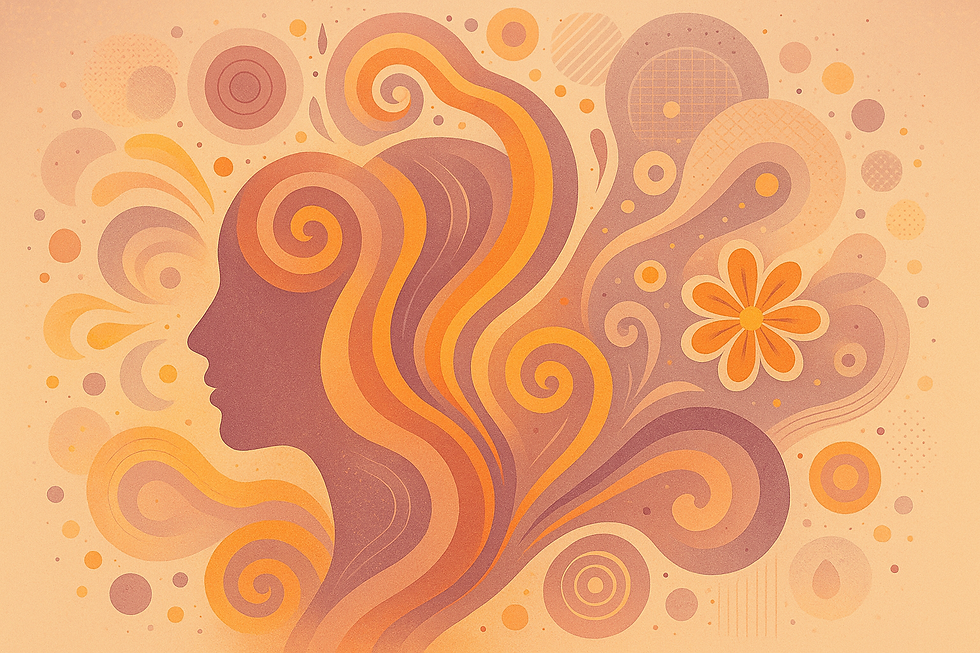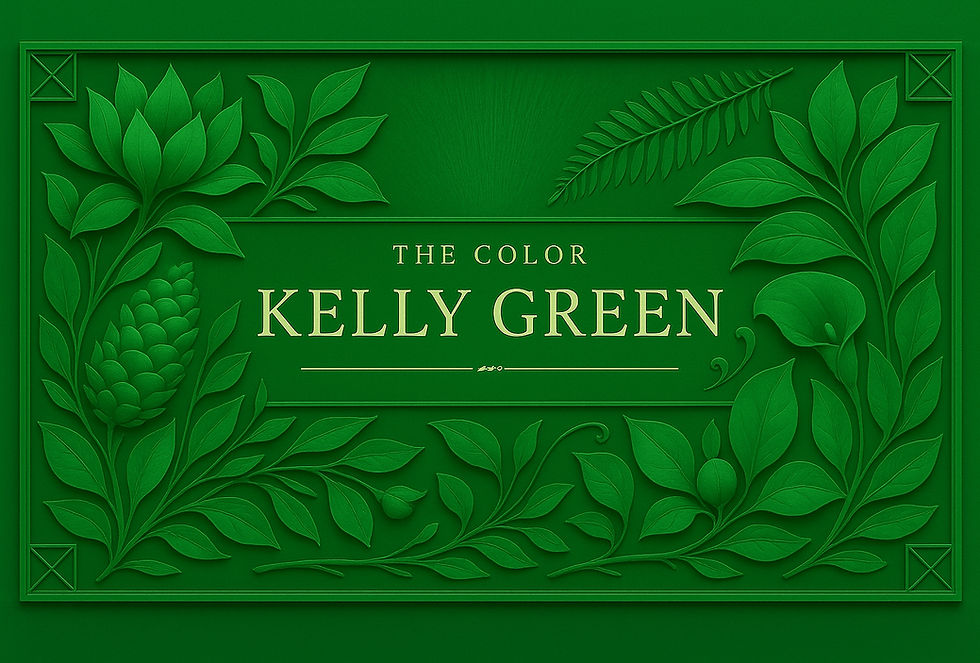Mauve Color: Everything to Know About the Color Mauve
- The Finest Writer

- Apr 19
- 6 min read
Updated: Apr 20

Welcome to our comprehensive guide on the enchanting color mauve! In this article, we will take you on a journey through the captivating world of mauve, exploring its origins, meaning, symbolism, and diverse applications.
Known for its unique blend of purple and pink, mauve holds a mesmerizing allure that has captured the hearts of artists, designers, and enthusiasts alike.
Join us as we dive deep into the depths of mauve, unraveling its secrets and uncovering its significance in various aspects of our lives. Whether you're seeking inspiration for your next creative project or simply curious about this captivating hue, this article is your ultimate resource to unlock everything there is to know about the color mauve.
What Color is Mauve?

Mauve is a soft, muted shade of purple that sits in the spectrum between pink and violet. It is often described as a pale, grayish-lavender hue, with a subtle pinkish undertone. Mauve is known for its delicate, vintage appearance, resembling the color of faded flowers or antique fabrics. It combines the gentle qualities of purple with the warmth of pink, creating a unique and soothing shade that stands out in various contexts.
How to Make Mauve?

You can use different color models, such as RGB, CMYK, and HEX, to create the color mauve.
Here are the values and codes for mauve in various formats:
Mauve RGB Values
Red: 224
Green: 176
Blue: 255
Mauve HEX Color Code
The HEX code for mauve is #E0B0FF.
Mauve CMYK Code
Cyan: 12%
Magenta: 31%
Yellow: 0%
Black: 0%
Mauve Web Safe Color
The closest approximation for mauve in the web-safe color palette is #CC99FF.
Paint Mixing to Create Mauve
If you're looking to create mauve with physical paint, you can start with a base of purple and add small amounts of white and red until you achieve the desired mauve shade. Experimenting with different proportions will help you achieve the precise hue you want.
Mauve Light and Perception
Mauve results from how our eyes perceive specific wavelengths of light. It falls between purple and pink on the visible spectrum and can vary in appearance depending on lighting conditions and surrounding colors.
Mauve is a versatile and eye-catching color used in various design, fashion, and artistic applications. Whether designing a website, painting a room, or creating artwork, these color values and codes will help you incorporate the captivating essence of mauve into your projects.
What Colors Match Mauve?

Mauve is a versatile color that can be paired with several complementary and harmonious colors to create visually appealing combinations. Here are some color schemes that work well with mauve:
Mauve and White
The combination of mauve and white creates a fresh and clean look. White provides a crisp backdrop that allows mauve to stand out and adds a sense of balance and brightness to the overall palette.
Mauve and Gray
Mauve paired with gray creates a sophisticated and modern color scheme. The neutral tones of gray complement the softness of mauve, resulting in an elegant and balanced palette.
Mauve and Gold
The combination of mauve and gold evokes a sense of luxury and glamour. The metallic sheen of gold enhances the subtle beauty of mauve, creating a striking and elegant contrast.
Mauve and Green
Mauve and green form a natural and harmonious duo. The freshness of green complements the gentle nature of mauve, creating a serene and calming palette.
Mauve and Navy Blue
Mauve combined with navy blue creates a sophisticated and timeless color scheme. The deep, rich tones of navy blue enhance the softness of mauve, resulting in a balanced and elegant palette.
These are just a few examples of colors that work well with mauve. Don't be afraid to experiment and explore combinations to find the perfect match for your project or personal style.
What is Mauve's Complementary Color?

The complementary color of mauve is a soft yellow or light green. In the traditional color wheel, mauve, a combination of purple and pink, sits opposite the yellow-green spectrum. Soft yellow or light green, light shades of yellow and green, are complementary colors. When mauve and soft yellow or light green are placed together, they create a strong visual contrast that can be visually striking and harmonious.
What Colors are Similar to Mauve?

Colors that are similar to mauve can be found within the purple-pink spectrum. Here are some colors that share similarities with mauve:
Lavender: Lavender is a soft, pale purple color that resembles mauve. It shares the same gentle and calming qualities, making it a great alternative to mauve.
Lilac: Lilac is another color similar to mauve. It is a light and muted shade of purple, often associated with vintage and romantic vibes. While it is slightly more purple than mauve, it carries the same soft and enchanting qualities.
Dusty Rose: Dusty rose is a muted pink color similar to mauve but with a more pinkish tone. It retains the same softness and vintage appeal as mauve.
Blush: Blush is a pale pink color similar to mauve but with a lighter and warmer tone. It carries the same gentle and delicate qualities as mauve.
Heather: Heather is a light, muted purple color similar to mauve but with a more grayish tone. It retains the same vintage and calming qualities as mauve.
These colors are closely related to mauve and can be combined or used as alternatives to create a harmonious color palette.
What Does Mauve Symbolize?

Mauve symbolizes various meanings and conveys different emotions depending on the context. Here are some common symbolisms associated with mauve:
Romance and Love: Mauve is often associated with romance and love, blending pink's affectionate qualities with purple's soothing qualities. It evokes feelings of tenderness and affection.
Nostalgia and Vintage Charm: Mauve is also linked to nostalgia and vintage charm. Its muted and dusty appearance evokes a sense of history and timelessness, often associated with old-fashioned elegance.
Femininity and Grace: Mauve is seen as a feminine and graceful color, often associated with elegance and sophistication. Its soft and delicate appearance adds a touch of refinement to various contexts.
Tranquility and Calm: Mauve is often associated with tranquility, serenity, and calmness. It carries purple's soothing and peaceful qualities, promoting relaxation and balance.
Spiritual Growth and Intuition: In some spiritual beliefs, mauve is associated with spiritual growth and intuition. It is believed to enhance spiritual awareness, promote self-reflection, and foster a deeper connection with one's inner self.
Creativity and Imagination: Mauve is a unique color that stands out and captures attention. It is often associated with creativity, imagination, and artistic expression.
It's important to note that color symbolism can vary across cultures and personal interpretations. The meanings associated with mauve can be influenced by personal experiences, cultural beliefs, and the specific context in which it is used.
The History of Mauve

The history of mauve as a color can be traced back to the 19th century. Here are some key points in the history of mauve:
The Discovery of Mauveine: Mauve was first introduced as a color in the mid-19th century with the discovery of mauveine, the first synthetic dye. William Henry Perkin, an English chemist, accidentally discovered mauveine in 1856 while attempting to synthesize quinine. This discovery led to the creation of the color mauve and marked the beginning of the synthetic dye industry.
Victorian Era Popularity: During the Victorian era, mauve became an incredibly popular color, particularly in fashion and interior design. The color's delicate and muted appearance appealed to the Victorian sensibilities of elegance and refinement. Mauve was often used in women's clothing, accessories, and home decor.
The Arts and Crafts Movement: In the late 19th and early 20th centuries, mauve continued to be a popular color within the Arts and Crafts movement. The movement emphasized traditional craftsmanship and simple, natural forms, and mauve's soft and earthy tones fit well within this aesthetic.
Modern Usage: In the 20th century, mauve became a recognized color in art and design. Its unique blend of purple and pink captured the attention of artists and designers, leading to its incorporation in various creative disciplines, including painting, fashion, and graphic design.
Today, mauve continues to be a popular and versatile color used in various applications, from interior design and fashion to branding and digital media. Its captivating and vintage qualities have made it a favorite among artists, designers, and individuals seeking a color that exudes charm and elegance.




